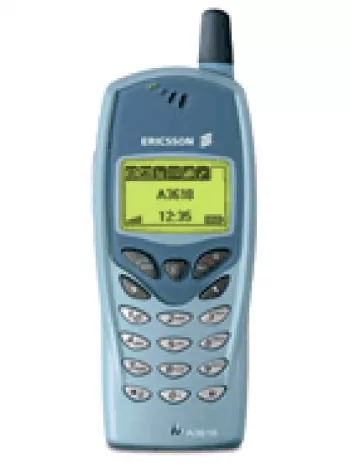
Overview of Ericsson R600
The Ericsson R600 is a mobile phone that reflects the early 2000s era of telecommunications. Announced in the fourth quarter of 2001, this device was intended for users who required a reliable and straightforward communication tool. Despite its discontinuation not long after its release, the R600 remains an interesting study in the evolution of mobile technology.
Network Capabilities
The Ericsson R600 operated on GSM networks, supporting 2G bands specifically on GSM 900 and 1800 frequencies. This made it functional in various regions across the globe where these frequencies were standard. It included limited GPRS capabilities, which provided users with basic data communication features.
Launch and Availability
The R600 was officially announced in the fourth quarter of 2001. Although it was quickly discontinued, it enjoyed a brief period in the market where it provided a durable and functional option for mobile communication.
Design and Build
The phone measured 105 x 45 x 20 mm and weighed 82 grams. It sported a compact design typical of early mobile phones, making it easy to hold and carry. The design included a mini-SIM card slot, reflective of the standard technology of the time.
Display Features
Featuring a grayscale graphic display, the Ericsson R600 supported a resolution that displayed up to 5 lines of text. This simplicity was a common characteristic of early mobile phones, focusing on functionality over aesthetics.
Memory and Storage
The phone did not support an external card slot, limiting its storage capabilities. However, it could store up to 200 phonebook entries, and it maintained a record of the last 10 received, dialed, and missed calls.
Sound Options
For sound alerts, the Ericsson R600 provided vibration and downloadable monophonic ringtones. It did not include a loudspeaker or a 3.5mm jack, which means audio functionalities were quite limited.
Communication Features
Connectivity on the Ericsson R600 was basic, lacking modern features like WLAN, Bluetooth, GPS, and radio. It included a WAP 1.2.1 browser, which was quite rudimentary by today's standards but adequate for basic internet access during its time.
Unique Features
Despite its basic feature set, the Ericsson R600 offered some amusement through four pre-installed games: Erix, Catcher, Pathy, and Ripple. Messaging capabilities included SMS and EMS, allowing for text and simple multimedia messaging.
Battery Performance
The device was powered by a removable Li-Ion battery (BST-20), offering a stand-by time between 90 to 150 hours and a talk time ranging from 2 to 4 hours. This was fairly average battery performance by early 2000s standards.
Miscellaneous Features
The Ericsson R600 was available in two color options, Ice Blue and Luminous Champagne. It also had an SAR value of 0.89 W/kg (head), which is a measure of the rate of radiofrequency energy absorbed by the body, compliant with safety standards.
Conclusion
In summary, the Ericsson R600 was a straightforward feature phone that acted as a reliable communication tool for users in the early 2000s. Its basic functionality and limited features reflect the technological landscape of the time and highlight the evolution of mobile phones into the multifunctional smart devices we use today.
Main Features of Ericsson R600
- GSM 900 / 1800 network support
- Compact dimensions: 105 x 45 x 20 mm
- Lightweight design: 82 g
- Mini-SIM compatibility
- Grayscale graphic display with 5 lines
- Phonebook capacity of 200 contacts
- Stores 10 received, dialed, and missed calls
- Vibration and downloadable monophonic ringtones support
- WAP 1.2.1 browser for basic internet browsing
- Includes classic games like Erix, Catcher, Pathy, and Ripple
- Removable Li-Ion battery with 90-150 hours standby time
- Available in two colors: Ice Blue and Luminous Champagne
Drawbacks of Ericsson R600
- Limited Network Technology: Only supports GSM with no EDGE.
- Discontinued Status: The phone was announced in 2001 and is no longer in production.
- Grayscale Display: Low-quality display with only grayscale graphics and limited to 5 lines.
- No Memory Card Slot: Lacks expandable storage options.
- Camera Absent: No camera functionality available.
- No Loudspeaker: Requires external devices for speaker capabilities.
- No 3.5mm Jack: Lacks standard audio jack for headphones.
- Limited Communication Features: Absence of WLAN, Bluetooth, GPS, and Radio.
- No USB Connectivity: Missing USB connection options for data transfer.
- No Java Support: Limited capability for running more advanced applications.
- Short Battery Life: Talk time ranges from 2 to 4 hours only.

View Also
More Phones
All Rights Reserved +14266 Phones © Mobilawy 2025

























